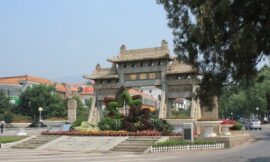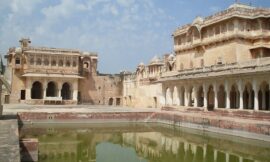The Independence Palace, also known as the Reunification Palace, is a historic landmark located in Ho Chi Minh City, Vietnam. This imposing building served as the presidential palace of South Vietnam during the Vietnam War and played a significant role in the country’s modern history. Today, it stands as a symbol of Vietnam’s struggle for independence and reunification.
The Independence Palace was originally built in the 19th century as the residence of the French colonial governor-general of Indochina. However, it gained international fame during the Vietnam War when it became the seat of power for the South Vietnamese government. The palace’s most famous moment came on April 30, 1975, when North Vietnamese tanks crashed through its gates, marking the end of the Vietnam War and the reunification of Vietnam.
The architecture of the Independence Palace is a striking blend of modernist and traditional Vietnamese design elements. The building features clean lines, geometric shapes, and minimalist decor, reflecting the architectural trends of the mid-20th century. At the same time, it incorporates traditional Vietnamese motifs, such as pagoda-style roofs and decorative carvings, giving it a unique and distinctly Vietnamese character.
Visitors to the Independence Palace can explore its well-preserved interiors, which have been restored to their original 1970s-era appearance. The palace’s rooms and halls are furnished with period-appropriate furniture, fixtures, and decor, providing a fascinating glimpse into the daily lives of South Vietnam’s political elite during the war.
Highlights of the palace include the presidential office, the banquet hall, the telecommunications center, and the underground bunker, which served as the command center for South Vietnamese military operations during the war. Visitors can also explore the palace’s lush gardens, which are dotted with fountains, statues, and manicured lawns.
In addition to its historical significance, the Independence Palace is also a popular tourist attraction and cultural landmark in Ho Chi Minh City. Guided tours are available for visitors who wish to learn more about the palace’s history and significance, as well as its role in shaping Vietnam’s modern identity.
Overall, the Independence Palace stands as a powerful symbol of Vietnam’s struggle for independence and reunification. Its imposing architecture, historical significance, and cultural legacy make it a must-visit destination for anyone interested in learning more about Vietnam’s tumultuous past and vibrant present.



